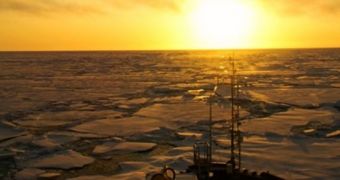Climate scientists are drawing attention that Arctic sea ices could disappear from the North Pole entirely within the course of our lifetimes. The ice-dominated landscape is already changing, with numerous shipping routes that were previously covered in ice now being made available.
The change is largely caused by global warming and climate change, experts say, and the situation is likely to deteriorate unless we take strict measures to protect the ice sheets. Just as our mental picture of the Arctic is dominated by ice, the continent may appear devoid of ice in our children's minds.
In a new investigation, researchers at the Massachusetts Institute of Technology (MIT) analyzed studies conducted by their peers on the thinning and melting trends of Arctic ices, and found those researches to largely underestimate what's going on in the real world.
In many of these studies, researchers failed to capture the influence exerted by multiple variables on the thinning of ice sheets. In others, the drift of ice was not taken into account at all. Together, these omissions led to underestimated trends.
What this implies is that, in reality, ices move and melt faster than current climate models hold. The new study was also used to improve on the 2007 Intergovernmental Panel on Climate Change (IPCC) Fourth Assessment Report.
The study holds the Arctic may become ice-free by the year 2100. However, MIT Department of Earth, Atmosphere, and Planetary Sciences (EAPS) postdoctoral researcher Pierre Rampal, the leader of the new work, says that this may happen several decades earlier.
According to the work the expert and his team carried out, it appears that Arctic ice is drifting two times faster and melting four times faster than the current IPCC report proposes. The findings are very significant for climate research.
Details of the investigation were accepted for publication in the latest issue of the esteemed Journal of Geophysical Research – Oceans. French scientists at the Centre National de la Recherche Scientifique / Université Joseph Fourier and Centre National de Recherches Météorologiques were part of the study.
Rampal explains that predicting the future of ice sheets in the Arctic with any degree of accuracy is extremely difficult, due primarily to the vast number of factors involved in determining this phenomenon, and the complex web of interactions these factors form.
However, researchers must try to do this, or otherwise politicians will have no idea as to the magnitude of the disaster we're heading towards. The role of the IPCC is to provide the best available science, and the new MIT report will undoubtedly be included in the next UN document.

 14 DAY TRIAL //
14 DAY TRIAL //